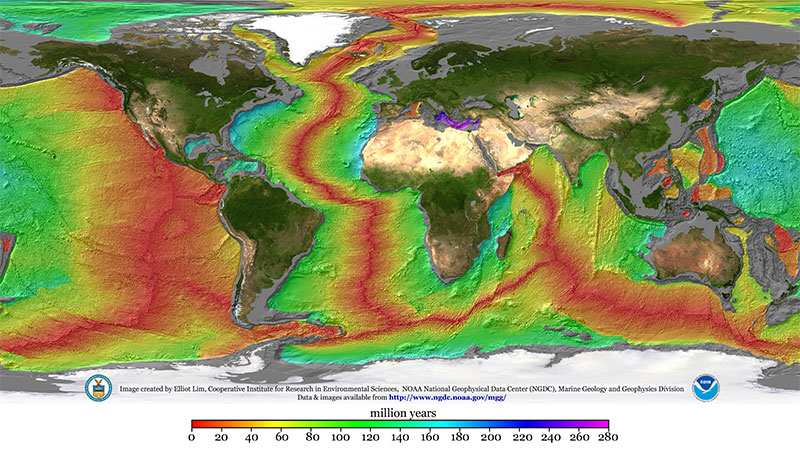Mighty mountain ranges can be found on every continent, yet the longest continuous chain of peaks is not located on any of these seven landmasses. Instead, the world’s most extensive range lies at the bottom of the sea, according to the NOAA.
ADVERTISEMENT
Known as the mid-ocean ridge system, it consists of a continuous range of underwater volcanoes stretching nearly 65,000 kilometers (40,390 miles), wrapping around the globe in a shape likened to the seams on a baseball.
On average, the peaks of these various submarine ridges lie some 2,500 meters (8,200 feet) beneath the surface of the ocean.
The mid-ocean range laughs at the puny shortcomings of the world’s longest continental range, which happens to be the Andes and its 7,600-kilometer (4,700-mile) span. Pathetic!

The near-continuous, global mid-ocean ridge system snakes across the Earth’s surface like the seams on a baseball.
Image credit: Mr. Elliot Lim, CIRES and NOAA/NCEI
In truth, though, the mid-ocean range has an unfair advantage as it is actually made up of several separate underwater ridge systems that exist on the boundaries of the various tectonic plates. It’s at these frontiers that the plates push apart, allowing magma to surge up and fill the gaps.
The result is a line of mountains and valleys that scars the seafloor. Because the world’s plate tectonics are in contact with one another, the ridges that form between them are all connected, forming an unbroken series of underwater ranges that collectively make up the mid-ocean range.
Among the most famous of these is the Mid-Atlantic Ridge, which runs right down the center of the Atlantic Ocean, reaching from the Arctic to the Antarctic.
ADVERTISEMENT
While most of the mid-ocean ridge lies beneath the sea, there’s a chance you’ve visited part of it. Iceland sits directly atop the Mid-Atlantic Ridge, where the Eurasian and North American tectonic plates meet, making it highly volcanic and geothermally active. It also means it’s one of the few places where this mid-ocean ridge emerges above sea level.
So if you’ve ever visited Þingvellir National Park or the Reykjanes Peninsula, you can technically say you’ve set foot on part of the longest mountain range on Earth.
An earlier version of this story was published in March 2024.
Source Link: The World's Longest Mountain Range Snakes Around Earth, But You Haven't Seen Most Of It